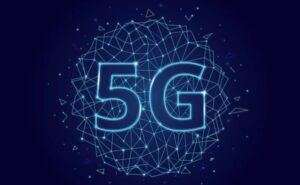
Those who specialize in cyberspace and data security have already been encouraging IT executives and internet providers to move up to fulfil the challenges of a dynamic and fast-changing digital environment for a while. Market expectations and supply of new capabilities are fast increasing now that 5G networks are operational. For telecommunications companies, 5G constitutes a substantial capability of providing experiences for consumers driving sales growth. Not only will 5G provide better internet connectivity, but it will also likely allow life-changing innovations that once were only a thing of sci-fi (Al-Dunainawi, Alhumaima and Al-Raweshidy, 2018). Although 5G connection speeds and accessibility have gotten a lot of attention, it’s also essential to understand 5G early prototype aspirations and how people view the 5G network service.
5G’s Expectations beyond cloud computing companies
The problems of handling business development circumstances are set to be compounded by the complexities of 5G. Several organisations, on the other hand, are just unsuitable. However, many people believe they are equipped, and so this arrogance might contribute to a disastrous lack of preparedness for the events that are about to unfold in their network. So far, the 5G that several businesses have encountered is like 5G Lite. It has poor bandwidth, and poor performance, and operates at a frequency of less than 6 gigahertz. However, there’s also another 5G on the horizon that very few firms are aware of. Real 5G, which will support anything from utility and industrial grids to automated cars and retail customers, has the potential to completely overrun the network’s edges (Jabagi, Park and Kietzmann, 2020). The capacity of programmes to retrieve the data will degrade dramatically for those who are untrained, causing major latency difficulties and demolishing the experience for users for both consumers and staff.
5G’s expectations are only the beginning of the challenge
Implementing sufficient protection to safeguard customers and crucial data might easily result in congestion inside obstacles. Allowing apps to run at 5G rates to provide the intended customer journey is one issue; guaranteeing that all this occurs safely, over more networking-accessible nodes than ever, poses a whole host of other issues (Lee, 2019). Something cloud computing companies cannot help with.

It will be necessary to plan carefully.
To solve the 5G issues, cyber security professionals are contemplating two options. The first is to handle the security procedures of the 5G base, which will be implemented on the operator side. Another is to meet the requirement for edge protection, when 5G is utilised as a fall-back or, progressively, as a gateway node. This last option often includes a 5G link as a component of an SD-WAN implementation. Whatever strategy is used, Automation and Artificial – intelligence capability will be required to stay up at the conventional edge. At the very same moment, additional dimensions of high-performance protection will be required at the cloud edge (Ahamed and Faruque, 2021). Integrated systems that cover an extremely sophisticated group of servers and cloud services will have to expand higher by introducing additional virtual machines and filters to accommodate the increased demand, as well as grow down by providing new elements in succession to shift the weight as evenly as feasible. To manage this, new layers of governance and distribution uniformity will be required to guarantee that just about everything runs smoothly, effectively, and safely. It’s due to 5G would not only speed up commerce and apps, but it will also speed up cyber-attacks.
Addressing 5G’s expectation problems is not a choice
Currently, 5G generates around $5 billion in annual revenue for operators. This figure is expected to rise to $357 billion by 2025. This would necessitate a dramatic adjustment in when and how 5G is used. And just an industry’s efforts to service the reliability and scalability requirements of 5G would become a crucial determinant of its viability. However, most businesses lack this competence. Furthermore, the pursuit of the finest products and systems has resulted in the creation of diversified and complicated motifs of systems that seem to be hard to implement. But under the constant strain of 5G’s demand, these systems will fare considerably worst (Guevara and Auat Cheein, 2020). Throughout the years, the main goal of cyberspace defence has always been to ensure that businesses don’t ever have to forsake safety to achieve the connectivity and program efficiency they demand. However, as challenging as last year has for internet providers and information security groups, many more are acutely alert that it is only a foretaste of a current paradigm shift that has already arrived.
Five approaches to make the 5G user experience better.
- Close the knowledge gap to effectively teach and advertise the benefits of 5G.
- Users anticipate a high level of consistency in both interior and exterior services.
- Increase the speed at which new and existing application cases are commercialised.
- 5G is causing network infrastructure demands by stimulating the use of new internet services (Lee, 2019).
- Consider what customers desire to imagine new applications.
Conclusion
Inside the customer base, 5G is pushing the development of innovative application cases and commercial prospects. Mobile gaming, fixed wireless access, and a more engaging consumer experience are just a few of the sectors that customer service providers are looking at. With the arrival of 5G, the capacity of programmes to obtain data will deteriorate drastically, generating serious latency issues and destroying the user experience for both consumers and employees (Ahn, 2021). The window of opportunity for solutions to stay up and satisfy has gone. 5G has arrived. The few who wish to take advantage of this chance must act swiftly while keeping an eye on the situation. So because demands of a 5G environment would only grow in the years ahead, and 6G is just years ahead.
More and More 5G based Cloud Computing Companies will participate to full fill the needs of the 5G environment.
Read More about Innovations in 5G






